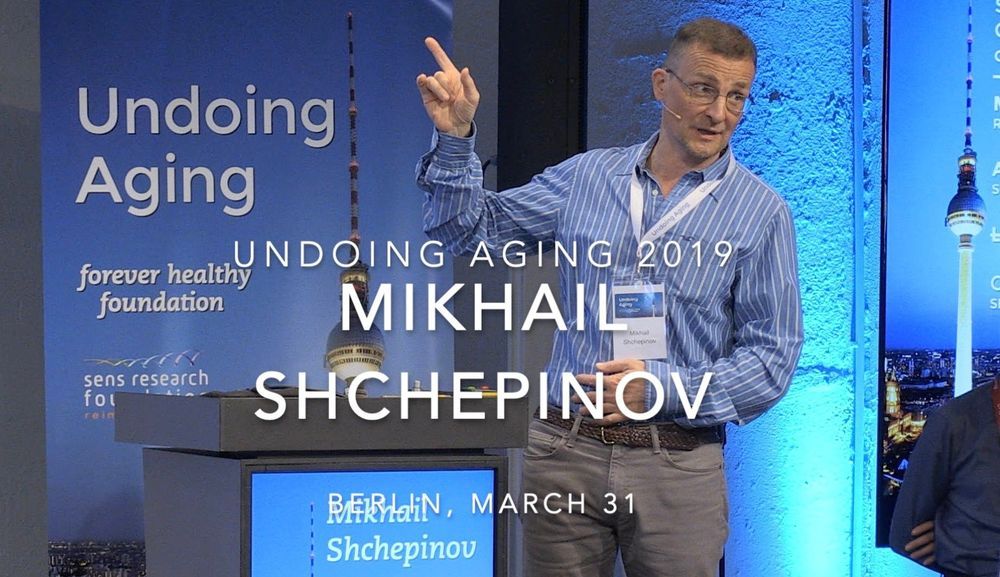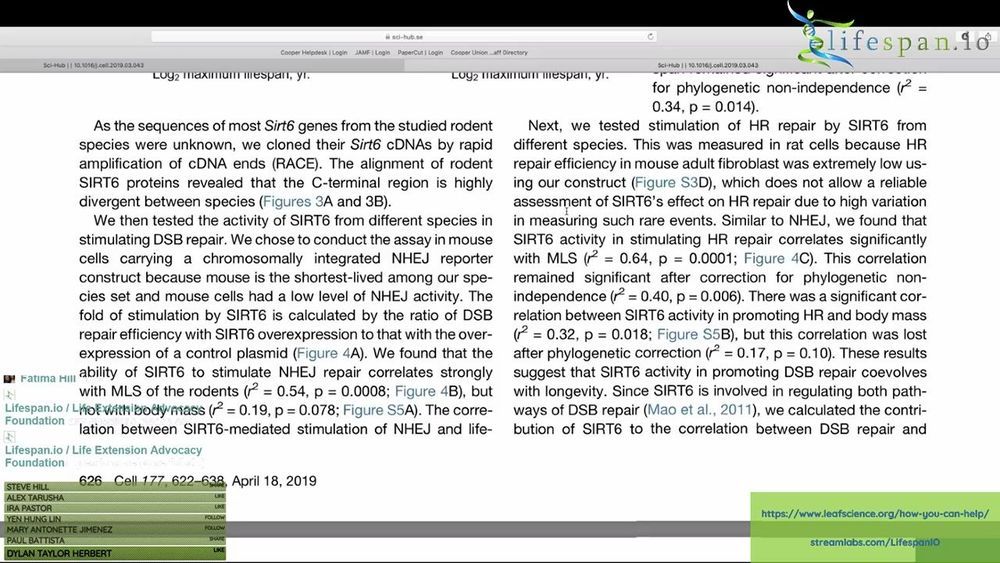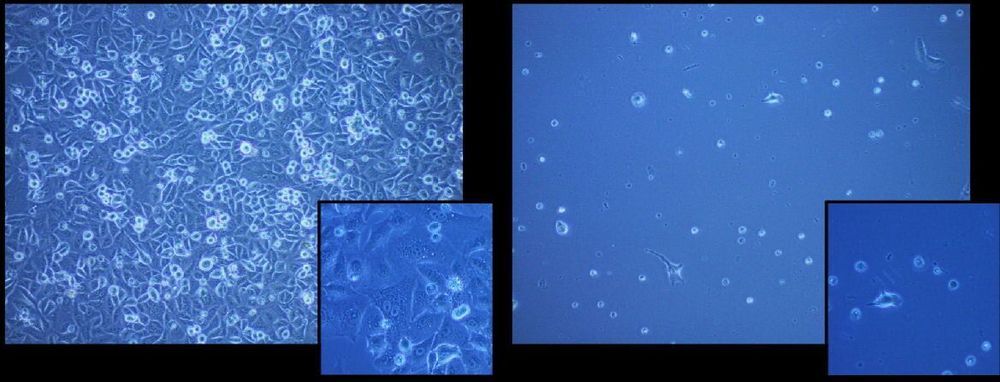Category: life extension

Rejuvenation Roundup July 2019
Last month was arguably the busiest of all for everybody on the LEAF team, given that our second NYC conference was taking place—and, by the way, it was a great success! Today, we’re offering a detailed account of the conference as well as all that has been going on with us in July, including, of course, a recap of the latest news from the aging research and rejuvenation community.
LEAF News

Keith Comito at Ending Age-Related Diseases 2019
As promised, we’re releasing videos from Ending Age-Related Diseases 2019, our highly successful two-day conference that featured talks from leading researchers and investors, bringing them together to discuss the future of aging and rejuvenation biotechnology.
To open the proceedings, our president, Keith Comito, welcomed attendees, introduced the event’s speakers and sponsors, discussed the staff, goals, and projects of LEAF, talked about the advances in rejuvenation biotechnology, and brought forward many more topics in the world of healthy longevity.

Years and Years’ transhumanist character Bethany shows the conundrum of merging human and machine
In the premiere of the HBO/BBC miniseries Years and Years, two parents are worried. Their teenage daughter Bethany has been hiding behind a 3D animated emoji mask and has scheduled a talk with them. Trying to figure out what they’re up against, they sneak a peek at her internet searches. When they discover that she’s been searching for information about being trans, they’re relieved; they can handle a transgender child.
Except when it comes time for their talk, Bethany tells her parents she’s transhuman and that she wants to “live forever as information.” The show represents transhumanist technology and aspirations, many of which revolve around upgrading and digitizing the human body, as a movement that will bring positive, negative, and downright confusing implications, ultimately changing the human race. The real question is what exactly that means. Humans opened the Pandora’s box of merging technology and biology a long time ago, and we’re now speeding head-on into the consequences, despite not knowing what humanity will become.
Bethany’s “coming out” scene hinges on the fact that the changes she desires are far more dangerous—and, for her parents, far more difficult to stomach—than gender reassignment. Bethany’s excitement at escaping the mortal coil brims with typical teenage naïveté: “Transhumans are not male or female, but better,” she tells her parents. For Bethany, that means no longer being human. “I will be data!” she enthuses.

New video from our 2019 Undoing Aging conference: Mikhail Shchepinov, Chief Science Officer at Retrotope, Inc., on aging and diseases resulting from the gradual accumulation of oxidative damages. undoing-aging.org/videos/mikhail-shchepinov-presenting-at-undoing-aging-2019 ____________
New video from our 2019 Undoing Aging conference: Mikhail Shchepinov, Chief Science Officer at Retrotope, Inc., on aging and diseases resulting from the gradual accumulation of oxidative damages.
undoing-aging.org/videos/mikhail-shchepinov-presenting-at-undoing-aging-2019
____________

The journal club hosted by Dr. Oliver Medvedik returns for July and takes a look at the new SIRT6 evolutionary biology paper by Dr. Vera Gorbunova and collaborators
The journal club hosted by Dr. Oliver Medvedik returns for July and takes a look at the new SIRT6 evolutionary biology paper by Dr. Vera Gorbunova and collaborators, showing a relationship between enhanced SIRT6 function and longevity.
Abstract DNA repair has been hypothesized to be a longevity determinant, but the evidence for it is based largely on accelerated aging phenotypes of DNA repair mutants. Here, using a panel of 18 rodent species with diverse lifespans, we show that more robust DNA double-strand break (DSB) repair, but not nucleotide excision repair (NER), coevolves with longevity. Evolution of NER, unlike DSB, is shaped primarily by sunlight exposure. We further show that the capacity of the SIRT6 protein to promote DSB repair accounts for a major part of the variation in DSB repair efficacy between short- and long-lived species. We dissected the molecular differences between a weak (mouse) and a strong (beaver) SIRT6 protein and identified five amino acid residues that are fully responsible for their differential activities. Our findings demonstrate that DSB repair and SIRT6 have been optimized during the evolution of longevity, which provides new targets for anti-aging interventions.
Literature
Tian, X., Firsanov, D., Zhang, Z., Cheng, Y., Luo, L., Tombline, G., … & Goldfarb, A. (2019). SIRT6 Is Responsible for More Efficient DNA Double-Strand Break Repair in Long-Lived Species. Cell, 177, 622–638.

Celebrating Our Second Conference
Ending Age-Related Diseases 2019 is over, and the dust is starting to settle after what can only be described as a hugely successful event for our organization. This was our second year of running a conference, and once more, we focused on the research and investment areas of rejuvenation biotechnology.
Totally sold out
This year, our venue at the Frederick P. Rose Auditorium at the Cooper Union in New York City was so popular that we totally sold out of tickets this year and had to turn people away! Our advice for next year is definitely to book early to avoid disappointment and take advantage of the lower prices that early booking offers.

Freezing cells made safer thanks to new polymer
Cell freezing (cryopreservation)—which is essential in cell transfusions as well as basic biomedical research—can be dramatically improved using a new polymeric cryoprotectant, discovered at the University of Warwick, which reduces the amount of ‘anti-freeze’ needed to protect cells.
The ability to freeze and store cells for cell-based therapies and research has taken a step forward in the paper “A synthetically scalable poly(ampholyte) which dramatically Enhances Cellular Cryopreservation.” published by the University of Warwick’s Department of Chemistry and Medical School in the journal Biomacromolecules. The new polymer material protects the cells during freezing, leading to more cells being recovered and less solvent-based antifreeze being required.
Cryopreservation of cells is an essential process, enabling banking and distribution of cells, which would otherwise degrade. The current methods rely on adding traditional ‘antifreezes’ to the cells to protect them from the cold stress, but not all the cells are recovered and it is desirable to lower the amount of solvent added.

Watch my “7 Signs of Longevity Revolution” keynote at Barclays
Longevity investor and visionary Sergey Young, founder of Longevity Vision Fund and Innovation Board Member of XPRIZE Foundation, delivers “7 Signs of Longevity Revolution” keynote at Barclay’s recent “Accelerating Evolution” conference, discussing recent developments in the longevity industry.
Watch to find out the forecasts for the industry’s trajectory of growth in the coming years, the increasing emergence of practical, real-world applications in the longevity sphere and how Longevity Vision Fund striving to be on the very forefront of the ongoing Longevity Revolution that is already happening around us today.
#longevity #lvf #longevityvisionfund #lifeextension #longevityrevolution #sergeyyoung #barclays